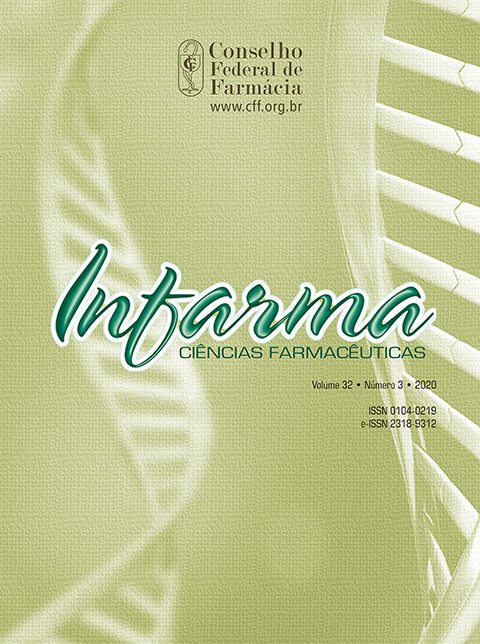SEROLOGICAL PROFI LE OF BLOOD DONORS AT A BLOOD CENTER IN THE INLAND OF CEARÁ, BRAZIL
DOI:
https://doi.org/10.14450/2318-9312.v32.e3.a2020.pp271-280Keywords:
Blood Donors, Pathology, Serology.Abstract
The safety in the blood transfer is important for the receiver remains free of risks or, that is why serological and immunohematological evaluation is essential. The aim was to analyze the serological profi le of blood donors in a Blood Center in the inland of Ceará. It was a retrospective, transversal, and documentary study. The records of blood donors with serological changes of all age groups of both gender, donating blood in the year 2017, were included. There were 19043 donations, with negative serology of 98.59%, positive serology of 1.09%, and undetermined serology of 0.32%. Among the positive serological results, the students prevailed in the occupation corresponding to 14.90%, while hepatitis B and syphilis corresponded to 33.33% each, followed by Chagas disease (12.04%), hepatitis C (9.72%), HIV (5.56%), and HTLV (5.56%). The age group with the highest frequency in serology positivity was between 19 and 41 years old, representing 74.51%. As for indeterminate serology, it was necessary to repeat the tests for Chagas disease, hepatitis B and C, HIV, HTLV, and syphilis. However, 34 donors did not return, and among those who returned, 15 remained undetermined, ten negative and two positive, hepatitis B and HTLV. Therefore, it was possible to determine the occurrence of positive serologies of blood donations, being necessary, even with the low values, the accomplishment of health campaigns in order to reduce the incidence and thus saving lives.
Downloads
Published
How to Cite
Issue
Section
License
Authors who publish in this journal agree to the following terms:
- Authors retain the copyright and grant the journal the right of first publication, with the work simultaneously licensed under the Licença Creative Commons Attribution which allows the sharing of work with acknowledgment of authorship and initial publication in this journal.
- Authors are authorized to take additional contracts separately, for non-exclusive distribution of the version of the work published in this journal (e.g. publish in institutional repository or as a book chapter), with acknowledgment of authorship and initial publication in this journal.
- Authors are allowed and encouraged to publish and distribute their work online (e.g. in institutional repositories or on their personal page) at any point before or during the editorial process, as this can generate productive changes as well as increase the impact and Citation of published work (See O Efeito do Acesso Livre ).


